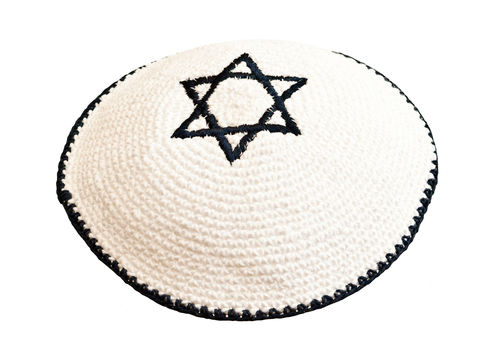(RNS) Last week, the Greek prime minister got dinged for showing insufficient respect for Judaism. It’s possible his critics have it exactly backwards.
Here’s the setup: During a visit to Israel, Antonis Samaras visited the Holocaust memorial center, Yad Vashem, and laid a wreath. Common activity for visiting heads of state. But he refused to wear a kippah, aka yarmulke, aka Jewish skullcap. That’s not so common.
Yad Vashem’s reported response: “Guests are asked to cover their heads only when visiting the Yizkor tent, where ashes of the (concentration) camps’ victims lay. Yad Vashem regrets (that Greece’s PM refused to wear a yarmulke), but that was his decision.”
So was Samaras wrong in not following the custom of most visiting dignitaries? Did he feel he was actually being more respectful of Judaism by not donning the cap? He didn’t say. But if he did, there’s a pretty good argument to be made in his favor.
If Samaras believes wearing a kippah is a distinctly Jewish and religious ritual, he could think that a non-Jew like him wearing one could show two kinds of disrespect: Either he’s being a religious hypocrite, pretending to observe the ritual. Or he thinks wearing a kippah is trivial.
Here are some possible comparisons: Would a non-Catholic be expected to genuflect in a church? How about kneel during services? When visiting a mosque, should non-Muslims doff their shoes? Visitors to the Vatican are asked not to wear shorts and tank tops.
Do any of those cross a line between respect and religious observance? It depends.
Gayle Colquitt White literally wrote the book on this topic. The former religion reporter for The Atlanta Journal-Constitution authored “Believers and Beliefs: a Practical Guide to Religious Etiquette for Business and Social Occasions.” Recently, she explained her general philosophy:
“Show respect, try never to offend, and, as a visitor, participate as far as the faith allows and you feel comfortable. Try not to encroach on either the host institution’s or your own personal religious boundaries.”
Which leads to this question: How religious is a kippah? It depends. Since there is no single authoritative Jewish authority — no pope — Jewish tradition is replete with centuries-long debates about many topics. This is one of those.
Certainly, the cap has a long religious pedigree. Exodus 28:4 lists the garments worn by the high priest while performing services in the Temple, including a head covering.
A couple of Talmudic passages make reference to covering the head.
One involves a mother who was told her son would grow up to be a thief. She had him wear a topper to remind him that God was always watching. Another recounted a sage saying he’d never walk more than four cubits bareheaded. His reasoning? “The divine presence is always resting over my head.”
Once wearing the kippah became custom, at least one school of thought was that it be followed to set Jews apart from non-Jews. Not simply as a marker to be observed from the outside, but a reminder to those who wear them that they are to be different.
But not all Jewish sages argue that head coverings are required in all situations. In some cases, they cite non-Jewish cultural custom that often dictates the removal of a hat as a sign of respect. (That’s still a mainstream understanding. Dr. Seuss based a whole book on kids getting it: “The 500 Hats of Bartholomew Cubbins.”)
These days, however, Orthodox Jews are strict about head covering in public and even private settings. Conservative and even many Reform Jews will generally wear a kippah during prayer.
So let’s compare the kippah (which means “dome” in Hebrew, by the way) to those other examples: Genuflection is unambiguously Catholic. Kneeling during worship is distinctively religious during worship. Demanding long pants and sleeves is a pretty broad edict that doesn’t feel specifically religious.
Taking off shoes in a mosque? It’s a Muslim sign of respect, to be sure. And in some countries, Muslims take off shoes before entering a house. Is it also religious? For many Muslims, it’s understood that way at the mosque. But it’s not adding to what one wears, so it feels less intrusive than being required to put something on.
Where does that put Samaras? Yad Vashem is not primarily a religious center. He wasn’t attending a worship service. He may believe that wearing a Jewish skullcap would violate his own (Greek Orthodox) beliefs.
As some news reports pointed out, Samaras is notable for his opposition to anti-Semitism in his own country. I’d say he deserves a pass on the kippah.
YS/AMB END WEISS






